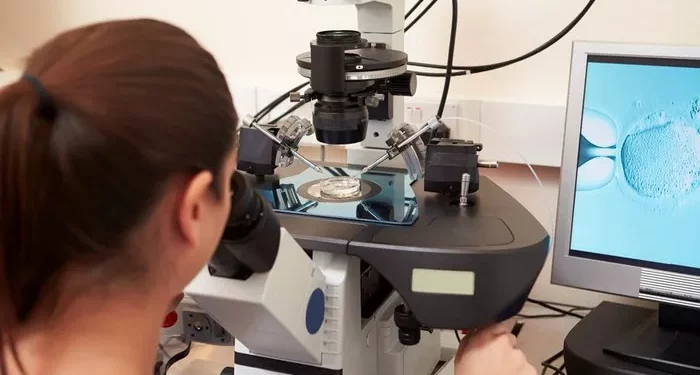Infertility is a common issue affecting many couples worldwide, with approximately 15% of couples experiencing difficulty in conceiving after one year of unprotected intercourse. While traditionally considered a predominantly female concern, male factors contribute to around 40-50% of all infertility cases. Understanding and addressing male fertility is crucial for the comprehensive management of infertility in couples.
Male fertility testing is essential to diagnose potential issues early and develop an appropriate treatment plan. It provides a detailed insight into the male reproductive health, helping to identify any underlying problems that might be hindering conception. This article aims to provide an in-depth overview of the tests available for assessing male fertility, focusing primarily on the semen analysis, its parameters, and additional tests that may be required.
Main Test: Semen Analysis
A semen analysis is the cornerstone of male fertility testing. It is a straightforward procedure that evaluates the health and viability of sperm. This test provides crucial information about the number, movement, and structure of sperm, as well as other important characteristics of the semen.
What is a Semen Analysis and How It’s Performed
A semen analysis involves collecting a semen sample, typically through masturbation, although special condoms can be used for sample collection during intercourse. The sample is usually collected at a clinic, but it can also be done at home with proper storage and transportation to the laboratory within a specific timeframe. It is important to abstain from ejaculation for 2-7 days before the test to ensure an accurate sample.
Once collected, the sample is analyzed under a microscope and through various biochemical tests to assess several key parameters.
Parameters Assessed in a Semen Analysis
Sperm Count (Concentration)
Sperm count refers to the number of sperm present in one milliliter of semen. A normal sperm count is typically considered to be at least 15 million sperm per milliliter. Lower counts can indicate potential issues with sperm production.
Sperm Motility (Movement)
Sperm motility is the ability of sperm to move efficiently. This is crucial for the sperm to navigate through the female reproductive tract and reach the egg. Motility is categorized into several types:
Progressive motility (moving straight or in large circles)
Non-progressive motility (moving but not in a productive direction)
Immotility (not moving at all)
At least 40% of sperm should be motile, with a significant proportion showing progressive motility.
Sperm Morphology (Shape)
Sperm morphology assesses the size and shape of sperm. Normal sperm have a distinct oval head and a long tail. Abnormalities in shape can affect the sperm‘s ability to fertilize an egg. Typically, at least 4% of sperm should have a normal morphology.
See also: The Link Between Appendicitis and Male Infertility
Semen Volume
Semen volume measures the total amount of semen ejaculated. A normal volume ranges from 1.5 to 5 milliliters. Low semen volume can suggest issues with the seminal vesicles or prostate gland.
pH Level
The pH level of semen is a measure of its acidity or alkalinity. Normal semen pH ranges from 7.2 to 8.0. Abnormal pH levels can indicate infections or issues with the seminal vesicles.
Presence of White Blood Cells
The presence of white blood cells in semen can indicate an infection or inflammation in the male reproductive tract. Normally, white blood cells should be absent or present in very low quantities.
Interpretation of Results
Interpreting semen analysis results requires a nuanced understanding of the various parameters and how they interrelate. Generally, a “normal” semen analysis might look like this:
Sperm count: ≥ 15 million sperm/mL
Motility: ≥ 40% motile, with ≥ 32% showing progressive motility
Morphology: ≥ 4% normal forms
Volume: 1.5 to 5 mL
pH: 7.2 to 8.0
White blood cells: < 1 million/mL
It is important to note that a single semen analysis is not definitive. Variability in semen quality means that multiple tests over a period of time are often necessary to get an accurate picture of male fertility. Additionally, even if all parameters are within normal ranges, it does not guarantee fertility, as other factors might still affect the ability to conceive.
Additional Tests (If Needed)
Depending on the results of the semen analysis, further tests may be recommended to diagnose specific issues more accurately.
Hormone Testing
Hormone levels play a significant role in sperm production and overall reproductive health. Blood tests can measure levels of testosterone, follicle-stimulating hormone (FSH), luteinizing hormone (LH), and prolactin. Abnormal hormone levels can indicate issues with the testicles or the pituitary gland.
Scrotal Ultrasound
A scrotal ultrasound provides a detailed image of the structures within the scrotum, including the testicles and surrounding tissues. This test can help identify physical abnormalities such as varicoceles, which are varicose veins in the scrotum that can affect sperm production and quality.
Anti-Sperm Antibody Testing
Anti-sperm antibodies can attack and destroy sperm, affecting motility and the ability to fertilize an egg. This test detects the presence of these antibodies in the blood, semen, or cervical mucus.
Genetic Testing
Genetic factors can also play a role in male infertility. Tests can identify specific genetic abnormalities, such as Y chromosome microdeletions or conditions like Klinefelter syndrome, which can impact sperm production and function.
See also: Causes & Treatments of Male Infertility
Conclusion
Addressing male infertility is a critical component of evaluating and treating couples facing difficulty in conceiving. Semen analysis is the primary test used to assess male fertility, providing valuable insights into sperm count, motility, morphology, and other important factors. However, multiple tests are often necessary to confirm results and identify underlying issues.
For those with abnormal semen analysis results, additional tests such as hormone testing, scrotal ultrasound, anti-sperm antibody testing, and genetic testing may be needed to diagnose specific problems. Consulting with a healthcare professional is essential for interpreting test results and developing a tailored treatment plan.
Disclaimer
This article provides general information about male fertility testing and is not a substitute for professional medical advice. If you have concerns about fertility, please consult a healthcare provider for personalized recommendations and treatment options.
Related Topics:
What You Need to Know: Does Chlamydia Cause Infertility?
Male Infertility: What Are the Underlying Medical Conditions
Emergency Guide: The Impact of Tight Briefs on Male Fertility



























